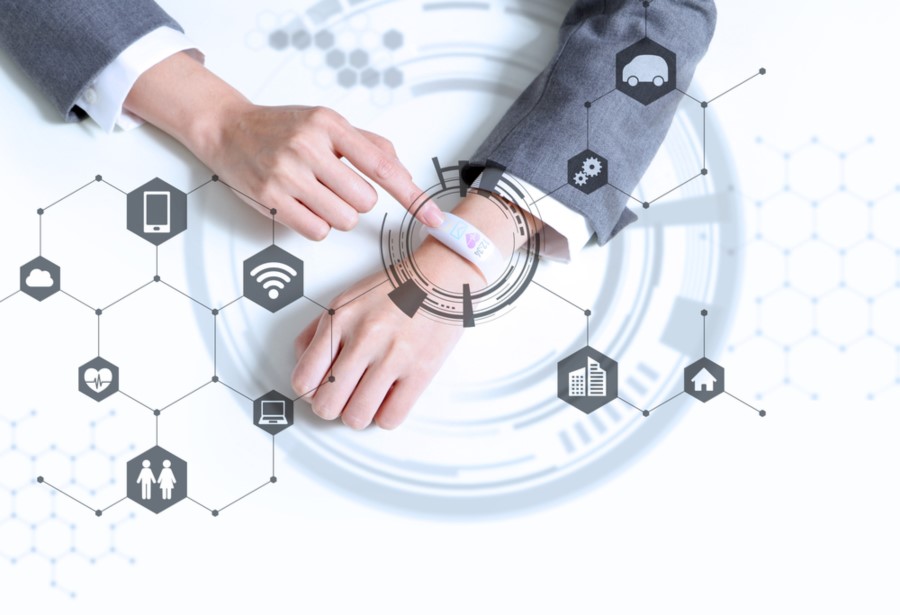How to use technology to motivate a healthier workforce

Although this has made working life more streamlined, it has also bred an ‘always on’ working culture, leaving many employees struggling to achieve a work/life balance.
This can have implications on the physical and mental health of workers, which, in turn, can have a negative impact on absenteeism, productivity and retention.
However, used in the right way, technology can help facilitate a healthier and happier workforce.
Health-related technologies, such as wearables, help overcome the barriers to engagement, with as many as half of employees already using them to manage their health.
According to Willis Towers Watson’s Global Benefits Attitudes Survey 2018 (GBAS), 35 per cent of employees use technology to monitor their activity, such as sleep and fitness; 26 per cent monitor their diet; 22 per cent use social media and online forums on health issues; 17 per cent monitor a health condition; and 16 per cent use online tools for medical consultations, such as telemedicine, virtual GP.
Technology equips employees with the digital tools they need to take control of their own wellbeing – and employers should be looking at how they can employ this medium to motivate their employees to lead healthier lives.
Thinking of the present
Technology encourages employees to take a proactive rather than reactive approach to their health. The ease of accessibility and real-time feedback offered by technology puts wellbeing at the forefront of employees’ minds, informing their health-related choices on a day-to-day basis.
With health-related technology, the onus is on the individual to take positive action and control of their own wellbeing, rather than being passive recipients of care defined and delivered by healthcare providers.
The heightened level of health awareness and the ability to digitally track progress helps motivate employees, encouraging them to stay on course and commit to achieving their personal health goals.
Adding a personal touch
It is often the case that when health and wellbeing programmes experience low levels of engagement, it is because employees do not see them as relevant to their needs.
Technology allows for a more personalised approach to health and wellbeing. One employee may suffer high levels of stress – and may benefit from a meditation app – whilst increasing fitness levels may be priority for his colleague – in which case, activity trackers would be the right route.
A one-size-fits-all approach does not work. Technology can be a cost-effective and convenient way of offering tools and resources tailored to an individual’s priorities, needs and wellbeing status.
Access to a support network
Technology, for many, is a means of connecting socially to their peers. Employers can take advantage of this association and apply it to the workplace to encourage healthier lifestyle-choices.
Creating a digital support network can help colleagues share their progress, exchange tips and ask health-related questions. Adding this social element can help raise morale and provide motivation.
Gamification takes it one step further by encouraging healthy competition among colleagues. This approach is not suitable for everyone – some will see their health and wellbeing journey as a strictly personal pursuit – but having that option available will ensure all employees are catered for.
Breaking down barriers
For many employees their health – particularly their mental health – is a private affair and the thought of speaking about issues to an employer can be daunting.
Fear of judgment can be a barrier to getting help, especially when dealing with sensitive issues, such as depression, stress and addiction.
As many as 45 per cent of employees would not be comfortable disclosing stress or anxiety issues to their manager, according to GBAS 2018.
Technology offers an alternative to face-to-face counselling, whether it be digital resources, linking to appropriate support groups or access to confidential helplines.
Although the manager-employee relationship is, by nature, a confidential one, this may give employees peace of mind and allow them to seek the appropriate help they need.
Identifying and adapting to need
Health-related technologies, such as wearables, collect a wealth of data, which can provide invaluable insight for employers. These employee-generated data insights can help companies take a strategic approach to health and wellbeing programmes.
Collating this data with that acquired from benefit claims experience, sickness absences and health-risk assessment can help identify and anticipate trends, leading to early intervention and a healthier and more productive workforce.
But a significant obstacle to effective benefits technology engagement is employees not wanting their employer to have access to their health-related data.
Employers need to build employees’ trust in areas pertaining to health, especially the use of employees’ personal data, if they want to be seen as the go-to resource for improving their health and wellbeing.
The author is Mike Blake, wellbeing lead at Willis Towers Watson.
This article was provided by Willis Towers Watson.
Willis Towers Watson is sponsoring REBA's Employee Wellbeing Congress 2018, which is being held on 5 July in London.
In partnership with WTW
WTW is a leading global advisory, broking and solutions company.






